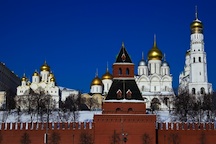

When the Ugly Gets Uglier
Following the elections, flocks of angry citizens took to the streets to voice their displeasure in what were later described as anti-Kremlin demonstrations. This led to the hundreds of people who had rallied together in Triumfalnaya Square being arrested by Russian Police, including Alexei Navalny, a renowned blogger who has never been shy when it comes to speaking out about government corruption and conspiracies. The arrests resulted in the protesters taking to Twitter to speak their minds. “#Triumfalnaya,” the hashtag created around the discussion, ended up being one of the most widely used hashtags in the history of Twitter.
On December 6, thousands of users hopped on Twitter to spread messages of a pro-Kremlin nature. Or did they? Security experts believe that the more than 2,000 accounts were compromised by way of hacking and used to purposely drown out the voices of the protesters. While it is not clear whether or not the initiative was supported by the Russian government or was merely the work of pro-Kremlin activists, it turned out be to very effective at silencing the noise. The compromised Twitter accounts reportedly delivered up to 10 messages per second, using a combination of patriotic tweets and foul language to successfully block out the feed associated with the Triumfalnaya hashtag.
Following the controversial election and subsequent social dilemma, Russian President Dmitry Medvedev hopped on his Facebook page to explain that he had ordered an investigation into the alleged electoral violations. This, by the way, was after his Twitter account was connected to a tweet that used an obscenity filled insult to question the patriotism of the anti-Kremlin protestors. While the post was quickly deleted, it was rather unsettling considering the language that was used and where it was purported to have originated from. And although the Facebook post generated more than 13,000 comments and 4,200 likes, it did nothing to win over the protesters. Judging the response of thousands of Russian citizens, Medvedev’s attempt at damage control was too little too late.
The Good and Bad of Social Media
Russia is fast becoming known for its social media presence. The nation has an active online community of more than 50 million users, who engage on sites like Facebook, Twitter and Vkontakte, the site many call Russia’s version of Facebook. In addition to the Twitter bot fiasco, activists claim that the government was behind denial of service attacks that disrupted the websites of media outlets, bloggers and election spectators. Whether or not this is true, the pro-Kremlin forces were not able to take out the country’s social media channel, which turned out to be the voice that kept the coverage alive.
Social media has proven to be an effective medium for communicating on a broad range of levels. In a very short amount of time, we have seen it used to help drive everything from customer service initiatives to alert systems in time of disaster. In the case of the anti-Kremlin demonstrations, it is clear to see that social media has both a good and a dark side.




